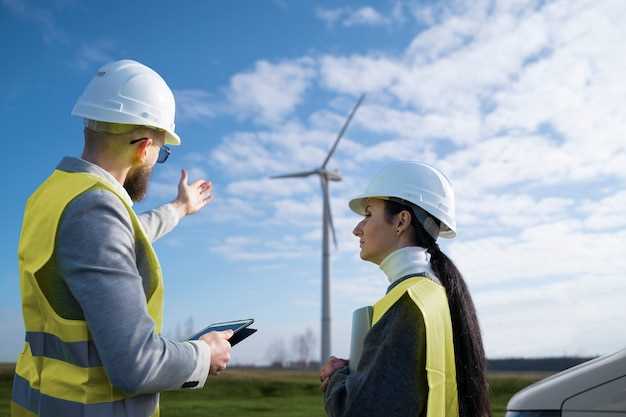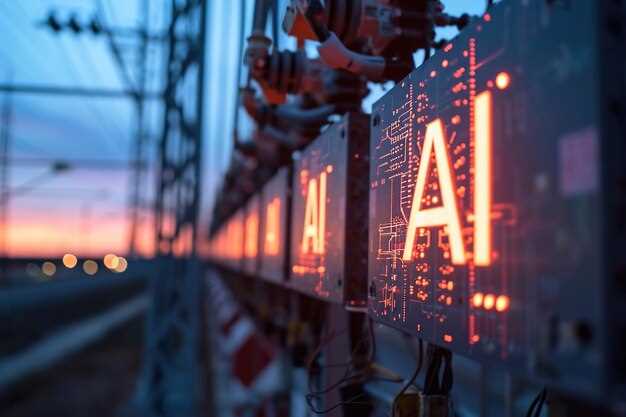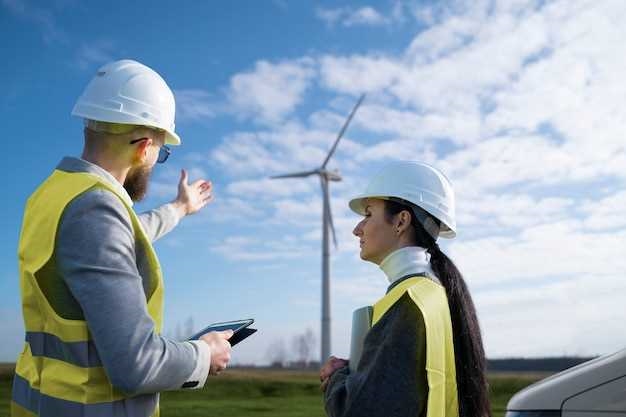
In today’s rapidly evolving world, the way we generate, distribute, and consume power is undergoing a profound transformation. As we strive for a more sustainable and efficient future, the power infrastructure that underpins our daily lives is being revolutionized, paving the way for a smarter and more resilient energy grid.
This paradigm shift in our energy landscape is not just about upgrading our existing systems; it’s about embracing a new era of innovation and technology. The traditional power grid, once a linear and centralized network, is now evolving into a dynamic and decentralized ecosystem. This transformation is driven by the need to optimize energy resources, enhance reliability, and empower consumers to actively participate in the energy market.
With the advent of renewable energy sources, such as solar and wind, the grid is becoming more diverse and sustainable. The integration of these intermittent sources, along with the rise of electric vehicles and energy storage systems, presents both challenges and opportunities. To fully harness the potential of these technologies, the grid must be modernized to accommodate bidirectional power flows, manage fluctuations in supply and demand, and ensure seamless integration of distributed energy resources.
Grid modernization is not just about hardware upgrades; it’s about leveraging advanced digital technologies to transform the way we monitor, control, and optimize the grid. The use of smart sensors, real-time data analytics, and artificial intelligence enables utilities to gain unprecedented visibility into the grid’s performance, identify potential issues before they escalate, and respond swiftly to disruptions. This data-driven approach empowers grid operators to make informed decisions, improve system reliability, and enhance the overall efficiency of the grid.
As we embark on this journey towards a smarter future, collaboration between utilities, regulators, technology providers, and consumers is crucial. The grid modernization efforts must be supported by policies that incentivize innovation, promote interoperability, and ensure equitable access to clean and affordable energy. By embracing this transformative vision, we can build a power infrastructure that not only meets the needs of today but also lays the foundation for a sustainable and resilient energy future.
The Need for Grid Modernization in the 21st Century
In the rapidly evolving landscape of the 21st century, the demand for a more efficient and reliable power grid has become increasingly apparent. As society becomes more reliant on technology and renewable energy sources, the traditional power infrastructure is struggling to keep up with the growing demands. This has led to a pressing need for grid modernization, a comprehensive overhaul of the existing power grid to meet the challenges and opportunities of the modern era.
Challenges of the Outdated Power Grid
The outdated power grid, designed decades ago, was not built to handle the complexities of today’s energy landscape. With the rise of renewable energy sources such as solar and wind, the grid must adapt to accommodate the intermittent nature of these sources. Additionally, the increasing electrification of transportation and the growing number of smart devices connected to the grid have put a strain on the aging infrastructure.
Furthermore, the traditional power grid lacks the necessary intelligence and flexibility to effectively manage and distribute power. It relies on manual processes and outdated technologies, making it difficult to respond to fluctuations in demand and optimize energy distribution. This results in inefficiencies, power outages, and a higher risk of system failures.
The Benefits of Grid Modernization
Grid modernization offers a range of benefits that can address the challenges posed by the outdated power grid. By incorporating advanced technologies such as smart meters, sensors, and automation systems, the grid can become more intelligent and responsive. This enables real-time monitoring and control, allowing for better management of energy flows and improved reliability.
Moreover, grid modernization facilitates the integration of renewable energy sources into the grid. By leveraging advanced analytics and forecasting tools, the grid can optimize the utilization of renewable energy, reducing reliance on fossil fuels and lowering greenhouse gas emissions. This not only benefits the environment but also enhances energy security and reduces dependence on foreign energy sources.
In addition, grid modernization enables the implementation of demand response programs, empowering consumers to actively participate in managing their energy consumption. Through smart grid technologies, consumers can access real-time energy usage data and make informed decisions to reduce their energy consumption during peak periods. This not only helps to alleviate strain on the grid but also provides cost savings for consumers.
In conclusion, the need for grid modernization in the 21st century is undeniable. The outdated power infrastructure is ill-equipped to handle the challenges and opportunities presented by the evolving energy landscape. By embracing grid modernization, we can build a smarter, more efficient, and sustainable power grid that meets the needs of the present and future generations.
Challenges and Opportunities in Power Infrastructure Transformation
In the journey towards a more intelligent and advanced future for power systems, there are numerous challenges and opportunities that arise in the transformation of the infrastructure. This article explores the key obstacles and potential advantages that come with the modernization of the grid.
1. Obsolete Systems: One of the primary challenges in power infrastructure transformation is dealing with outdated and inefficient systems. These legacy systems often lack the capability to handle the demands of a modernized grid, resulting in frequent power outages and limited flexibility. Upgrading these systems is crucial to ensure a reliable and resilient power supply.
2. Integration of Renewable Energy: As the world shifts towards a more sustainable energy future, the integration of renewable energy sources presents both challenges and opportunities. The intermittent nature of renewable sources such as solar and wind power requires innovative solutions for grid stability and energy storage. However, this transition also opens up new possibilities for decentralized power generation and reduced carbon emissions.
3. Cybersecurity: With the increasing digitization and connectivity of power systems, the risk of cyber threats becomes a significant concern. Protecting critical infrastructure from cyber attacks is essential to maintain the integrity and reliability of the grid. Implementing robust cybersecurity measures and fostering collaboration between stakeholders are crucial steps in addressing this challenge.
4. Grid Resilience: Power infrastructure transformation provides an opportunity to enhance the resilience of the grid against natural disasters and other disruptions. By incorporating advanced technologies such as smart sensors, predictive analytics, and self-healing capabilities, the grid can become more adaptive and responsive to unforeseen events, minimizing downtime and improving overall reliability.
5. Economic Growth and Job Creation: The modernization of power infrastructure not only brings challenges but also creates significant opportunities for economic growth and job creation. The deployment of new technologies and the expansion of renewable energy sectors can stimulate local economies, attract investments, and generate employment opportunities in the clean energy sector.
Conclusion: The transformation of power infrastructure presents a range of challenges and opportunities that require careful consideration and strategic planning. By addressing the obstacles and leveraging the potential advantages, the power sector can pave the way for a smarter and more sustainable future.
Smart Grid Technologies: Revolutionizing the Power Sector

In the ever-evolving landscape of the power sector, the emergence of smart grid technologies has brought about a paradigm shift in the way electricity is generated, transmitted, and consumed. These innovative solutions are reshaping the power industry, paving the way for a more efficient, reliable, and sustainable future.
Enhancing Efficiency and Reliability
One of the key benefits of smart grid technologies is their ability to enhance the efficiency and reliability of the power sector. By leveraging advanced sensors, communication networks, and data analytics, these technologies enable real-time monitoring and control of the entire electricity grid. This allows for proactive identification and resolution of issues, minimizing downtime and reducing the risk of power outages. Moreover, smart grid technologies facilitate the integration of renewable energy sources, optimizing their utilization and reducing dependence on traditional fossil fuels.
Empowering Consumers and Promoting Sustainability
Smart grid technologies empower consumers by providing them with greater visibility and control over their energy usage. Through smart meters and home energy management systems, individuals can monitor their electricity consumption in real-time, identify energy-intensive appliances, and make informed decisions to reduce their carbon footprint. Additionally, these technologies enable demand response programs, allowing consumers to adjust their energy consumption based on price signals or grid conditions. By promoting energy conservation and facilitating the adoption of clean energy solutions, smart grid technologies play a crucial role in promoting sustainability and mitigating the environmental impact of the power sector.
In conclusion, smart grid technologies are revolutionizing the power sector by enhancing efficiency, reliability, and sustainability. With their ability to optimize energy generation, transmission, and consumption, these innovative solutions are paving the way for a smarter and more resilient future. As the world continues to prioritize clean and sustainable energy, the adoption of smart grid technologies will play a pivotal role in transforming the power sector and ensuring a greener tomorrow.
Enhancing Grid Resilience and Reliability through Modernization
Improving the robustness and dependability of the electrical grid is a critical aspect of its transformation towards a more intelligent and efficient future. By implementing modernization strategies and technologies, we can enhance the ability of the grid to withstand and recover from various challenges and disruptions, ensuring a reliable and resilient power supply for communities and industries.
One key aspect of grid modernization is the integration of advanced monitoring and control systems. These systems utilize cutting-edge technologies to gather real-time data on grid performance, enabling operators to identify potential issues and take proactive measures to prevent or minimize disruptions. By continuously monitoring the grid’s health and performance, operators can quickly detect and respond to faults, ensuring a more reliable and resilient power supply.
Another crucial element of enhancing grid resilience and reliability is the implementation of smart grid technologies. These technologies enable bidirectional communication between the grid and its components, allowing for better coordination and optimization of power generation, distribution, and consumption. By intelligently managing the flow of electricity and dynamically adjusting to changing conditions, smart grids can quickly adapt to disruptions, reroute power, and restore service more efficiently, minimizing downtime and improving overall reliability.
Furthermore, grid modernization involves the integration of renewable energy sources and energy storage systems. By diversifying the sources of power generation and incorporating clean and sustainable energy options, the grid becomes less reliant on a single source and more resilient to disruptions caused by fuel supply issues or natural disasters. Energy storage systems also play a crucial role in enhancing grid reliability by providing backup power during outages and smoothing out fluctuations in supply and demand.
In conclusion, enhancing grid resilience and reliability through modernization is essential for ensuring a stable and efficient power supply in the face of evolving challenges. By implementing advanced monitoring and control systems, smart grid technologies, and integrating renewable energy sources and energy storage, we can build a more resilient and reliable grid that can withstand disruptions and provide uninterrupted power to communities and industries.
The Role of Renewable Energy Integration in Advancing Grid Modernization

Renewable energy integration plays a pivotal role in the ongoing efforts to modernize and enhance the efficiency of power grids. By seamlessly incorporating renewable energy sources into the existing grid infrastructure, we can pave the way for a sustainable and resilient energy future. This article explores the significance of renewable energy integration in grid modernization and highlights its potential benefits.
Enhancing Grid Resilience and Reliability
Integrating renewable energy sources such as solar and wind power into the grid diversifies the energy mix, reducing reliance on traditional fossil fuel-based generation. This diversification enhances the resilience and reliability of the grid by mitigating the risks associated with supply disruptions and price volatility. Renewable energy sources are often distributed geographically, allowing for localized generation and reducing the vulnerability of the grid to single points of failure.
Moreover, the intermittent nature of renewable energy sources necessitates the development of advanced grid management technologies. These technologies enable efficient monitoring, forecasting, and balancing of renewable energy generation, ensuring a stable and reliable power supply. By integrating renewable energy into the grid, we can leverage these technologies to optimize the utilization of renewable resources and minimize wastage.
Enabling Decentralized Energy Generation
Renewable energy integration empowers individuals and communities to become active participants in the energy transition. Through the deployment of distributed generation systems, such as rooftop solar panels and small wind turbines, renewable energy can be generated at or near the point of consumption. This decentralized approach reduces transmission losses and enhances energy efficiency.
Furthermore, the integration of renewable energy into the grid enables the implementation of innovative energy management systems. These systems allow for the seamless integration of energy storage technologies, such as batteries, which can store excess renewable energy for later use. By combining renewable energy generation with energy storage, we can overcome the intermittency challenge and ensure a reliable and continuous power supply.
In conclusion, the integration of renewable energy sources into the power grid is a crucial aspect of grid modernization. It enhances grid resilience, reliability, and efficiency while enabling decentralized energy generation. By embracing renewable energy integration, we can pave the way for a smarter and more sustainable energy future.
Building a Sustainable and Efficient Power Infrastructure for the Future
In this section, we will explore the concept of creating a power infrastructure that is both environmentally sustainable and highly efficient, ensuring a reliable and resilient energy system for the future. We will delve into the importance of developing innovative solutions that minimize the negative impact on the environment while maximizing the utilization of available resources.
Creating a sustainable power infrastructure
One of the key challenges in building a sustainable power infrastructure is reducing our reliance on fossil fuels and transitioning towards renewable energy sources. This involves harnessing the power of solar, wind, hydro, and geothermal energy, among others, to generate electricity in a clean and sustainable manner. By embracing these renewable sources, we can significantly reduce greenhouse gas emissions and mitigate the effects of climate change.
Maximizing efficiency in power generation and distribution
Efficiency plays a crucial role in ensuring the sustainability of our power infrastructure. By adopting advanced technologies and optimizing power generation and distribution processes, we can minimize energy losses and maximize the utilization of available resources. This includes the use of smart grids, energy storage systems, and advanced monitoring and control systems to enhance the overall efficiency and reliability of the power infrastructure.
Investing in research and development
To build a sustainable and efficient power infrastructure for the future, it is essential to invest in research and development. This involves exploring new technologies, materials, and methodologies that can further enhance the performance and sustainability of the power infrastructure. By fostering innovation and collaboration, we can drive the development of cutting-edge solutions that address the challenges of the future and pave the way for a smarter and greener energy system.
Collaboration and policy support
Building a sustainable and efficient power infrastructure requires collaboration among various stakeholders, including governments, utilities, industry players, and consumers. It is crucial to establish supportive policies and regulations that incentivize the adoption of sustainable practices and technologies. By working together, we can create an enabling environment that encourages investment in renewable energy, promotes energy efficiency, and drives the transformation of the power infrastructure for a smarter and more sustainable future.
In conclusion, building a sustainable and efficient power infrastructure for the future is a multifaceted endeavor that requires a holistic approach. By embracing renewable energy sources, maximizing efficiency, investing in research and development, and fostering collaboration and policy support, we can pave the way for a greener, more reliable, and resilient energy system that meets the needs of present and future generations.
